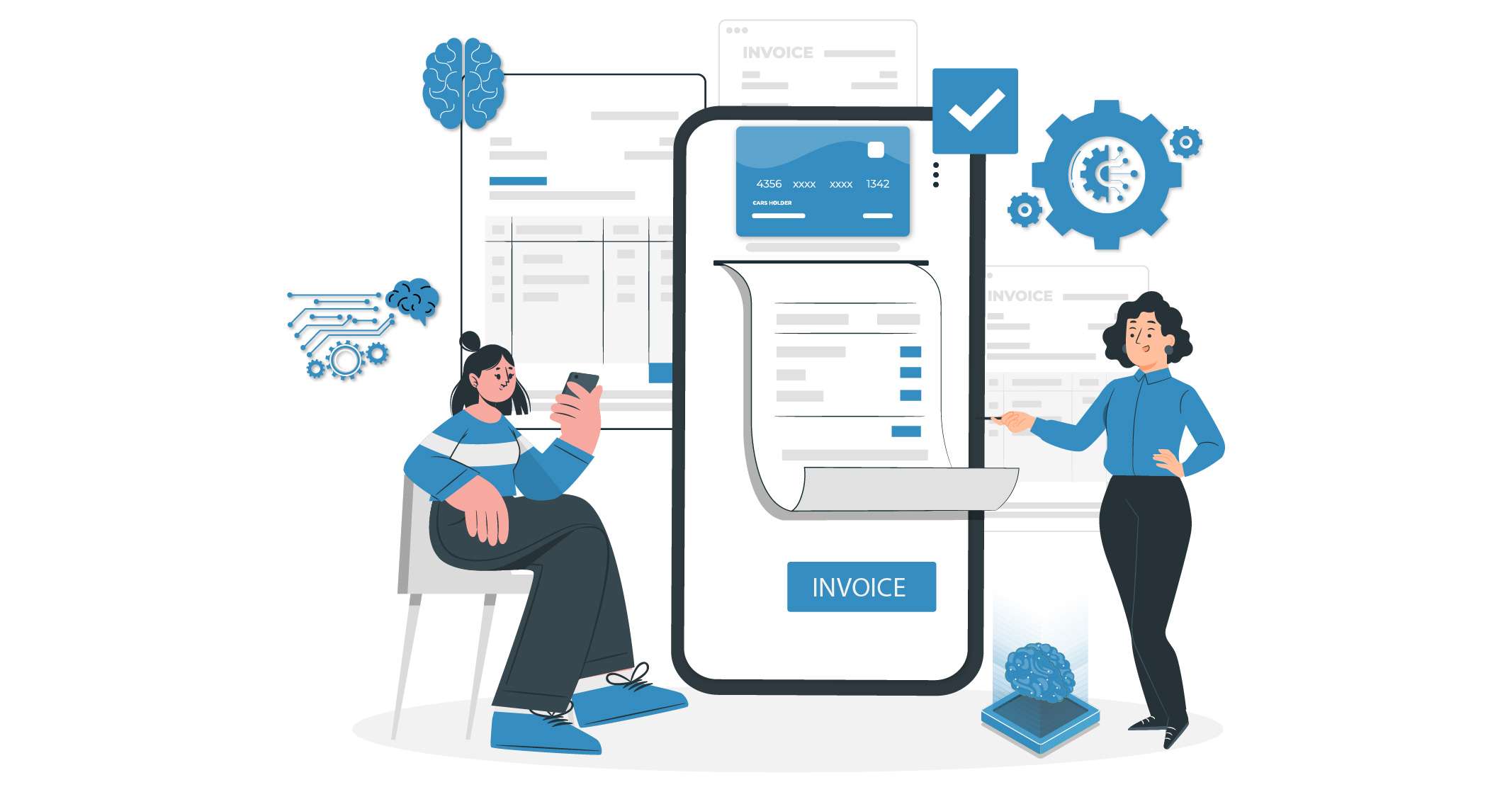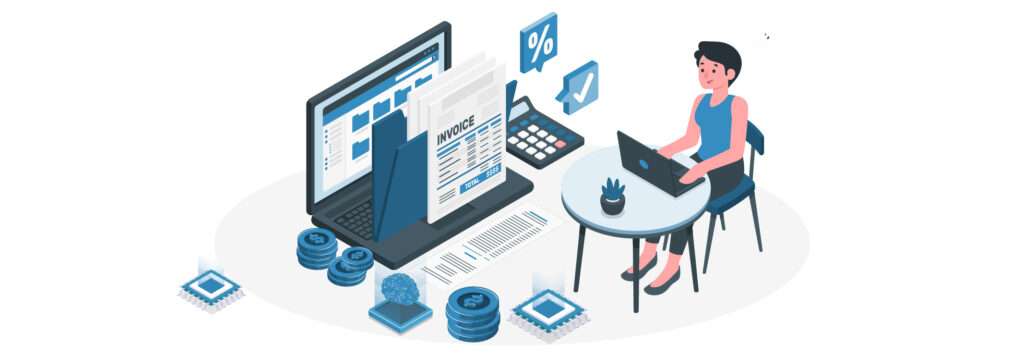Invoice processing encompasses an entire world of workflows from the point of receiving one to finally making the payment to a vendor. With invoices coming from multiple channels like emails, faxes, posts, and more; finding them and entering invoice data manually, matching purchase orders, getting approvals and repeating the whole cycle for each invoice; the entire process can turn complex and repetitive in no time. Therefore, there is an emerging need for invoice processing automation.
What if you could leverage the latest tools and streamline your accounts payable? Well, this blog will tell you all about invoice automation systems and why the traditional systems are no longer needed.
What Does Manual Invoice Processing Involve?
Manual processing involves collecting invoices from multiple channels and then first collecting and organizing them in one place. Post that it is matched with your data to see if all services/goods have been provided.
If all data matches, it is recorded in the ledger. Post that it is sent for approval to all parties and if a nod is achieved then only the payments are approved. Your team needs to be extremely careful while performing these operations, as a single error may lead to loss of client trust, misplaced funds, and eventually poor ROI. As a result, many companies are now shifting towards automated solutions.
Simplifying Processes Via Automated Invoice Processing
Invoice processing automation is the process of streamlining and automating the invoice processing workflow. The processes are streamlined such that suppliers are paid after a set of conditions are fulfilled. The data is first extracted from invoices, then fed into accounting systems, reviewed, and then approved based on set rules.
Automated invoice processing solutions let you take a more organized approach to accounts payable. Standardized coding, automated approvals, and checking statuses on real-time dashboards are just some of the benefits offered by invoice processing automation. Most of these tools can directly be integrated with ERP solutions helping you expedite payments and boost cashflow.
5 Must-Have Features in an Invoice Automation Software
Before you automate your invoice payment process with a tool, make sure your chosen solution offers these features:
1. Multi-Channel Invoice Capture
Your chosen solution must offer support for multiple channels for vendors to let them send invoice data. Some of the common formats included PDF, scanned copies, XML formats, paper-based invoices, and electronic invoices.
2. Intuitive User Interfaces
It must be easy for you and your employees to use your selected invoice automation system. Moreover, it should have zero or a short learning curve.
3. KPI/SLA Management
When you select a solution make sure it lets you track performance indicators and service level agreements (SLAs). This will help you track invoice status and see how your money is being spent along with reducing invoice processing time.
4. Seamless Integration with ERPs
Invoice automation tools must integrate seamlessly with other accounting systems. This allows the routing of the validated data into existing ERP systems.
5. Customization Capabilities
Rules for invoice routing vary in each company. Thus, a solution that offers top-notch customization abilities should be your choice.
9 Reasons You Need to Automate Invoice Processing
Here is why you need to invest in invoice processing automation.
1. Process Invoices Faster
In the absence of automated invoice processing tools, it can take up to 14-20 days to process just a handful of invoices. However, automated systems can help you reduce time spent on invoice processing and set an organized workflow for your processes. This will also help you improve vendor relations and build a strong rapport with you.
2. Increased Accuracy
Manual data entry involves errors and multiple layers of communication. Not to forget lost invoices and miscalculations. Luckily, invoice automation solutions can help you process hundreds of invoices at once, say goodbye to errors, and welcome enhanced accuracy in your payments.
3. Avoid Delays And Late Fees
As you grow your business, you will receive invoices from multiple suppliers and vendors. This way there are chances that you miss out on payments and end up paying late fees. However, if you have an automated invoice processing system, you will seldom miss an invoice. This will not only help you cut down on late fees but also leverage early payment discounts.
4. Maximizes Visibility
It can be extremely difficult to wade your way through a pile of papers when sorting invoices. Underreported expenses, incomplete accruals, and inefficient processes lead to a loss of transparency in your business. However, with invoice processing automation, not only will you be able to boost visibility, but also address issues in real time.
5. Improve Vendor Relationships
Your relationships with external vendors and suppliers are of utmost importance for your business. Late payments or any errors in payments can lead to strained relations. Thus, negatively impacting your business. An invoice processing automation system lets you build positive relations with vendors and eliminate unnecessary communication and hassles along the way.
6. Easy Monitoring And Reporting
With the increased transparency that automation brings in, you can easily monitor expenses and track where to cut expenses and save more. Most of the automated invoice processing automation tools offer top-notch analytics and extensive reporting functionalities. This lets you get access to visual data representations in real time and make improved business decisions.
7. Frees Your Resources
The work behind manual invoice processing will leave your accounts payable time tired and occupied. They will rarely be left with any time to do other work. Offer them some solace by investing in an automatic invoice processing automation tool. Not only will it expedite processes, but it will also automate manual work and let them focus on important tasks.
8. Improved ROI And Savings
The best part of invoice processing automation is that you save time and resources. Additionally, you no longer need to pay late fees and penalties. This, in turn, lets you generate massive ROI and savings in the long run.
9. Customized Processes
Enhance your invoice processing automation by having tailored processes for your enterprise’s specific needs. For instance, when you receive invoices from multiple channels, you will need a tool to collate all data from these channels. You can also choose to automate your workflow if you have a multi-approval process. This will give you control and freedom to scale your business as required.
Serina: The Only Invoice Automation System You Need

50% of businesses need 2-3 people to approve an invoice. Waiting for invoice approvals after data entry can be a time-consuming process. Surprisingly, 22% of businesses require 6 or more people to get invoice approvals.
To solve all these problems at once, we created a solution that knows how to reduce your workload. Here are just a few benefits of making Serina a part of your business:
- Gain real-time visibility by getting access to all invoice information and payment details at any workflow stage
- Track pending payments and seamlessly move data into ERPs
- Keep your vendors happy with AP (Accounts Payable) automation and foster long-term relations
- Experience an 83% reduction in data validation efforts
- Get access to expense analytics and interactive dashboards
- Leverage API and BPM tools for top-notch risk management and smoother optimization
FAQs
1. What is the difference between manual and automated invoice processing?
While manual invoicing can be painstaking and time-consuming, automated invoice processing lets you create invoices accurately and faster. Thus, helping you get paid on time and maintain a smooth cash flow.
2. Why should we automate invoices?
The prime reason to automate invoice processing is to streamline accounts payable, expense management data extraction, and entering data into ERP systems.
3. What does AI invoice processing involve?
AI-based invoice processing maps each level of approval and ensures invoices reach the right person at the right time. Moreover, AI can flag discrepancies, track unapproved purchase orders in real-time, and prevent losses.
4. What are the benefits of invoice processing automation?
Automated invoice processing can help you save time and money. Other benefits include:
- Improved Cash Flow Management
- Real-time Data Access
- Reduced paperwork
- Seamless integrations with other systems
- Smooth strengthened vendor relationships








